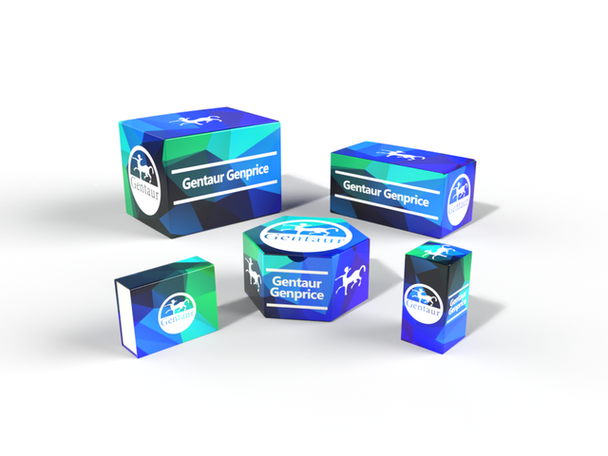740
Mouse Excitatory amino acid transporter 1 (SLC1A3) ELISA Kit | AE19086MO
- SKU:
- 740-AE19086MO
- Availability:
- Usually ships in 5 working days
Description
Mouse Excitatory amino acid transporter 1 (SLC1A3) ELISA Kit | AE19086MO | Gentaur UK, US & Europe Distribution
Species Reactivity: Mouse (Mus musculus)
Abbreviation: SLC1A3
Alternative Name: EA6; EAAT1; FLJ25094; GLAST; GLAST1; excitatory amino acid transporter 1|sodium-dependent glutamate/aspartate transporter
Application: ELISA
Range: 0.156-10 ng/mL
Sensitivity: 0.056 ng/mL
Intra-Assay: ≤4.8%
Inter-Assay: ≤9.7%
Recovery: 0, 99
Sample Type: Serum, Plasma, Other biological fluids
Detection Method: Sandwich
Analysis Method : Quantitive
Test Principale: This assay employs a two-site sandwich ELISA to quantitate SLC1A3 in samples. An antibody specific for SLC1A3 has been pre-coated onto a microplate. Standards and samples are pipetted into the wells and anySLC1A3 present is bound by the immobilized antibody. After removing any unbound substances, a biotin-conjugated antibody specific for SLC1A3 is added to the wells. After washing, Streptavidin conjugated Horseradish Peroxidase (HRP) is added to the wells. Following a wash to remove any unbound avidin-enzyme reagent, a substrate solution is added to the wells and color develops in proportion to the amount of SLC1A3 bound in the initial step. The color development is stopped and the intensity of the color is measured.
Product Overview: Glutamate and aspartate are excitatory neurotransmitters that have been implicated in a number of pathologic states of the nervous system. Accumulation of extracellular excitatory amino acids can be cytotoxic and may also lower the seizure threshold in epilepsy. EAAT1 (SLC1A3) is a member of a family of high-affinity sodium-dependent transporter molecules that regulate neurotransmitter concentrations at the excitatory glutamatergic synapses of the mammalian central nervous system. The cDNA encoded a deduced protein that was 95% homologous to a previously reported rabbit glutamate/aspartate transporter. The highest expression was found in the substantia nigra, red nucleus, and hippocampus, and in cerebral cortical layers
Stability: The stability of ELISA kit is determined by the loss rate of activity. The loss rate of this kit is less than 5% within the expiration date under appropriate storage condition. The loss rate was determined by accelerated thermal degradation test. Keep the kit at 37°C for 4 and 7 days, and compare O.D.values of the kit kept at 37°C with that of at recommended temperature. (referring from China Biological Products Standard, which was calculated by the Arrhenius equation. For ELISA kit, 4 days storage at 37°C can be considered as 6 months at 2 - 8°C, which means 7 days at 37°C equaling 12 months at 2 - 8°C) .






